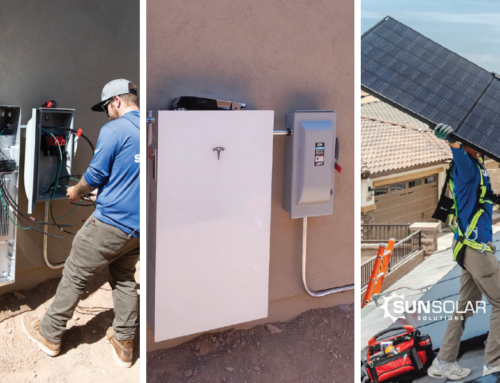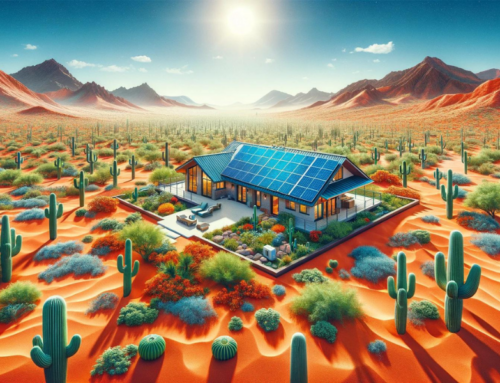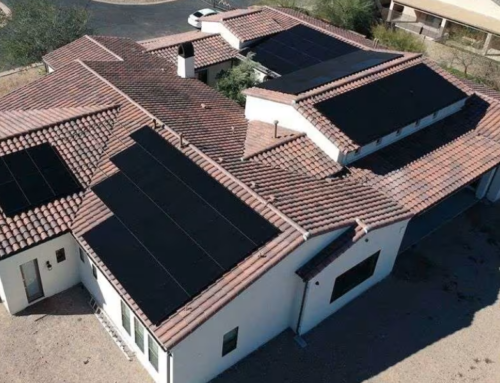We have good news and bad news.
We’ll share the bad news first: Arizona’s utility regulators voted 3-2 last month to reopen their investigation into how best to strike a sustainable economic balance between electric companies and customers with rooftop solar, whose unused energy those companies buy and resell elsewhere on the grid. That investigation ended in 2017 after three years of painstaking deliberation, resulting in a deal whereby the state’s utilities would pay homeowners a government-set rate for the energy they export to the grid.
The rate for new customers would drop by up to 10 percent each year but stay locked in for new customers for ten years, ensuring certainty for solar companies while increasing the urgency for customers to go solar as soon as possible. The commission emphasized that any forthcoming revisions would alter payment rates only for new customers, leaving existing customers and customers who go solar before any changes “grandfathered in” to the payment plans they signed up for. That’s a precedent that the commission has previously established and intends to respect.
Commissioner Nick Myers, who pushed for the vote, has insisted that a more drastic decrease in payments to solar homeowners is warranted in light of the solar industry’s increased size and strength since 2017. He has cast his stance against the current payment model (in industry jargon: the “resource comparison proxy export rate,” or the “RCP rate”) as a fiscally conservative opposition to what he creatively refers to as a “subsidy.”
His stance has been echoed by other conservative commissioners, including the chairman, Jim O’Connor.
“We are not back in 2014 looking to help an emerging industry gain a foothold,” O’Connor said.
Never mind footholds. The reality is that the solar industry is—and has been—hanging on by its fingertips.
The good news concerns the public comments section of the meeting, during which supporters of the state’s most economically and environmentally promising industry pushed back against the wrongheaded thinking that threatens to keep Arizonans stuck in the past.
The Arizonans who took the lectern—and there were many of them—conveyed the dangers posed by this backward trend more eloquently and persuasively than we could, which is why we wanted to devote this column to reproducing those comments mostly verbatim.
Many commenters addressed what is most directly threatened by a potential overhaul of the state’s solar economics: regulatory certainty, an intangible but vital asset for any business community.
“How is anyone […] supposed to know what decisions to rely on if they’re going to be scrapped every few years?” asked Autumn Johnson, executive director of the Arizona chapter of the Solar Energy Industries Association. “We have a different commission every two years. No one—the utilities, the ratepayers, or ancillary industries like solar—will know what to do if you can’t make up your minds.”
Robert Bulechek, an energy-efficiency consultant who advises companies on solar energy, testified from personal experience to the destructive effect of capricious regulation. In Tucson, there have been long wait times for installations because of low staffing levels, and business owners have attributed their lack of hiring to fears that the regulatory environment will change, he said. And the ACC’s decision to reinvestigate pricing for distributed solar power is an example of government actions that cause such apprehension, he added.
“What solar company is going to hire new crews when they’re not sure if the Corporation Commission is going to severely damage the solar industry?” Bulechek asked the commissioners.
As many commenters pointed out, the effects of a potential alteration to the solar industry’s ground rules are unlikely to stay neatly isolated from their intended targets.
Sam Friedberg, a solar consultant, solar system owner, and customer of APS, explained why commissioners should not complacently trust their own ability to contain the consequences of the rule changes they’re about to contemplate.
“We all know that a proposal that enables a lower RCP rate abruptly and unpredictably would be devastating for future solar adoption,” Friedberg said. “The whole industry here seems to be aware of that,” referring to his fellow business owners’ grim prognoses.
Since the continued viability of existing solar businesses depends on the attractiveness of rooftop solar to future customers, a variety of existing business models and contractual relationships are at stake in the commission’s deliberations regarding terms for future customers.
“Mr. Chairman, you said earlier that contracts signed will be honored,” Friedberg said. “There are contracts that have been signed by businesses for leases, for employee training, other costs and investments that simply wouldn’t be honored if this changes this business model.”
A Tucson business owner shared his own experiences with adverse and unpredictable regulations.
Louis Woofenden, owner of Net Zero Solar, attributes his success as an independent solar entrepreneur partly to a stable business environment and “staggering technological advances,” which were fostered by good policy at the federal and state levels. Other policies, however, have created headwinds, he said.
“I would say we persevered despite efforts by utilities to make the deal tougher,” Woofenden said.
He urged the commissioners to consider how their decisions could affect Arizona’s ability to live up to its pro-business ideals.
“I think that’s the best of what entrepreneurship and the free market can be,” he said. “You’re building a team of like-minded people, and you’re building something people want, and you’re offering it out in this little piece of the marketplace that the commission has created over the years—this little sandbox inside the monopoly system that you regulate.”
Friedberg did not mince words about what was ultimately at stake in a future discussion over rate changes.
“It is a business killer; It is a job killer,” Friedberg said. “And even if that’s not the primary focus here—focusing on businesses and jobs—you can’t willfully ignore it and still claim to be looking out for the public interest.”
The erroneous idea that solar is “subsidized” (which we dismantled in our last column) was also a subject of impassioned criticism. Arizonans who spoke to the commission incisively exposed the absurdity of this notion, especially in light of the surrounding economic context.
Commissioners who support revising the payment model for exported solar power consistently describe that model as a “subsidy” to homeowners who have invested in a rooftop solar system.
Court Rich, an attorney who represents solar entrepreneurs in Arizona, stressed the incongruity between that description and the financial reality.
APS’s own data shows that the utility pays solar homeowners less for their surplus energy than it pays for energy from other sources.
“That’s not a subsidy,” Rich said. “That’s a great deal for ratepayers.”
Johnson (the Arizona SEIA chief) later elaborated on the theme.
“If I sell Commissioner Myers an apple for a dollar, and he sells it to Commissioner Marquez Peterson for two dollars, that’s not a subsidy,” she said.
Burechek highlighted the crucial context missing from this discussion: the subsidies enjoyed by the energy industry’s entrenched interests.
“The utilities are already being subsidized by not having to pay the cost of the health and climate harm that their pollution causes,” Burechek said. “That’s a cost on the entire population. Solar, and renewables in general, don’t have those health and climate costs. That should be recognized: that, essentially, the export rates are already not representing the true benefits of the solar industry.”
Arizona’s solar community might be in for a windy and bumpy road, with these commissioners driving us toward an uncertain future. Thankfully, members of this community have shown up to serve them and noticed that their constituents will be there to keep them from driving into a ditch.
It’s not too late to secure your energy future. Call Sunsolar Solutions today at (602) 362-7760 to have a design prepared for your home free of charge.







